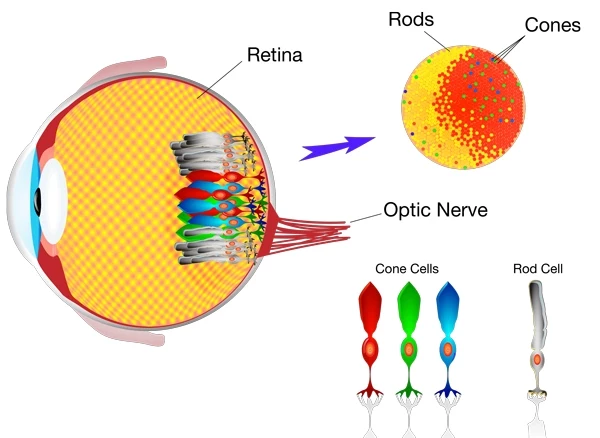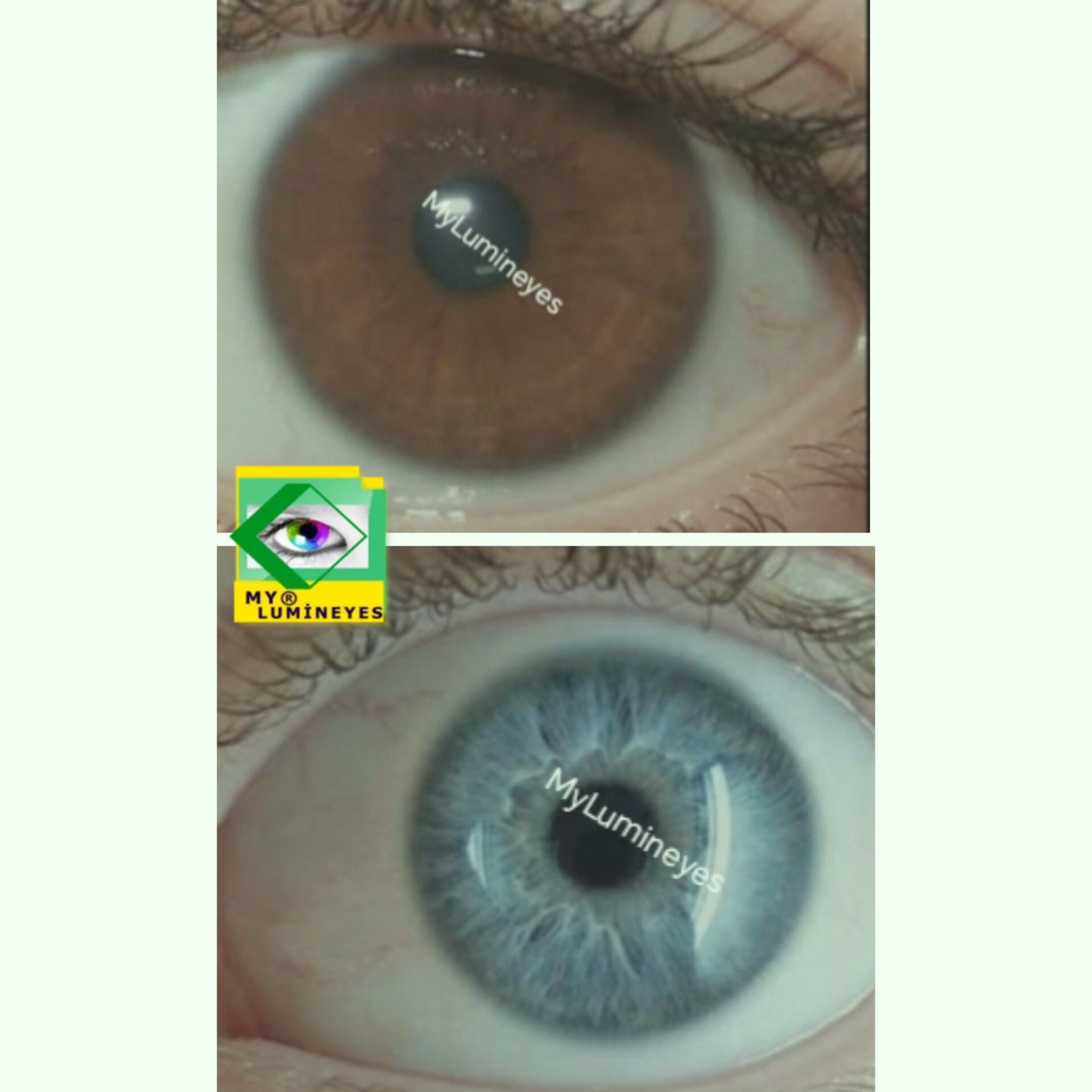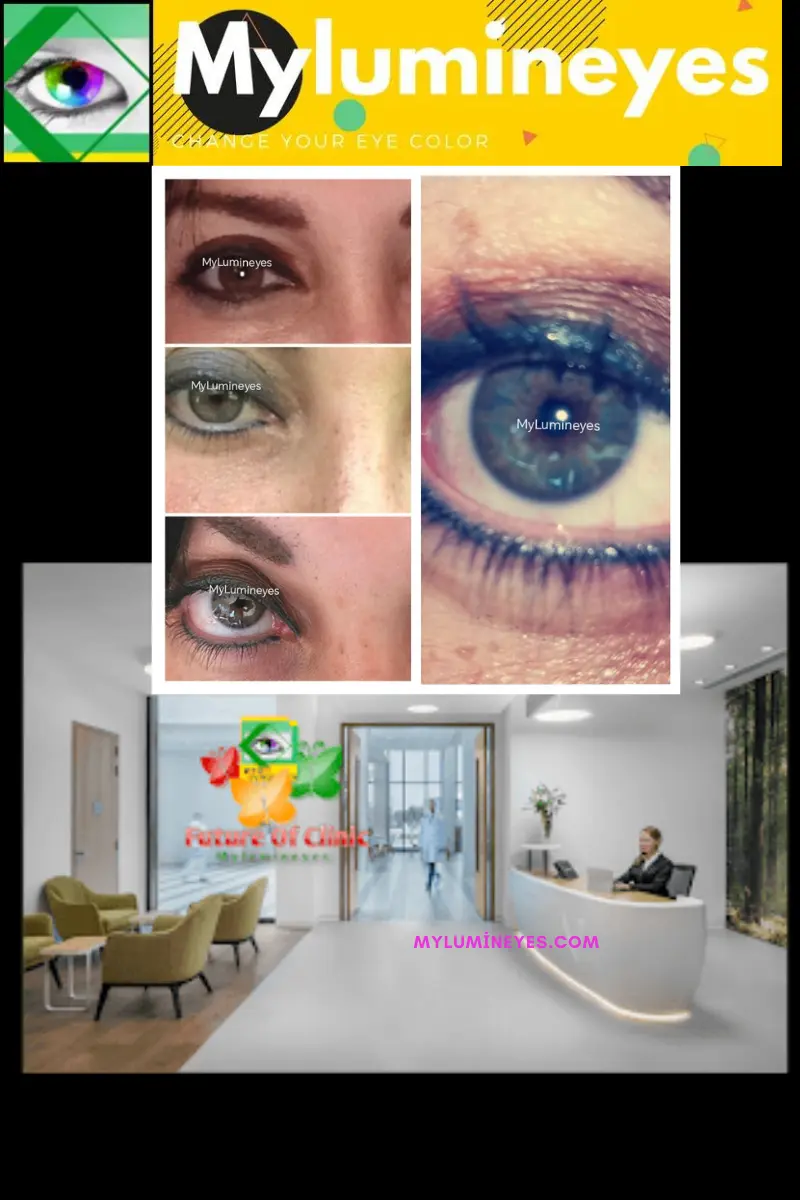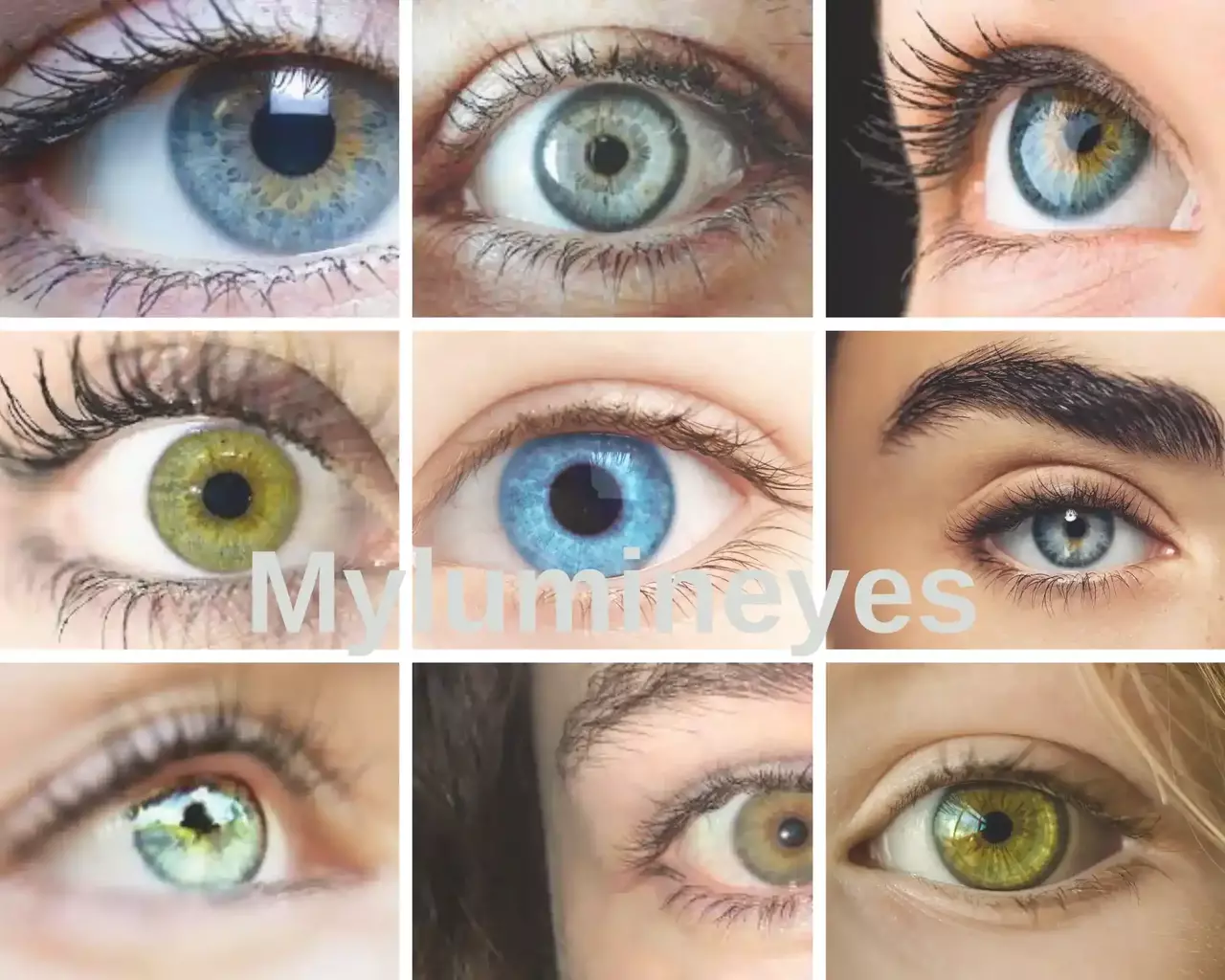Why does color vision occur? How color-sensitive are our eyes?
Two different kinds of cells found in the retina— rods and cones—are in charge of seeing and responding to light. Photoreceptors are the term used to describe the light sensitive cells. Low or muted lighting can set off the bars. Under more light, rods get activated. An average person has 110 million rod cells and about 6 million cone cells. Cones are home for photopigments, molecules in charge of color perception. Human photopigments come in three different colors: red, green, and blue. Every one of these cone forms has sensitivity for different visible light wavelengths.
The reflected light of the lemon excites the red and green cones all day. The cones then pass a signal via the optic nerve to the brain’s visual cortex. The brain controls the signal’s strength and the count of active cones. In this case, the receiving and interpretation of the nerve signals produce the impression of yellow color.
The reflected light of the lemon especially stimulates the rod cells of the eye under low illumination. Only when they are turned on do the bars show grayscale.
An individual’s sense of color also depends on their past visual contacts with objects. We refer to this phenomena as color invariance. Under different conditions, hue constancy is the phenomena whereby an object’s apparent color remains very constant. For instance, seeing a lemon under a red light will most likely still translate as the hue yellow.

How Do People Perceive Different Colors?
Different light wavelengths activate cone cells to varied degrees.
For example, light with a wavelength of 580 nanometers stimulates red and green cone cells. Certain wavelengths can trigger all three cone cells.
The brain combines the signals from these cells to perceive different wavelengths of light differently.
When two of the three primary colors of light, red, blue and green, overlap, intermediate colors are formed. The tones of the intermediate colors can be adjusted by controlling the amounts of red, blue and green light. When all the visible wavelengths of light come together, it is perceived as white.
Paints are of different colors because of the pigments in them that absorb rays of different wavelengths. The standard primary colors in paints are yellow, red-violet and blue-green. Yellow pigments absorb blue light, red-violet pigments absorb green light, and blue-green pigments absorb red light. Therefore, when we mix the paints in the primary colors, the mixture appears black because all the colors are absorbed.
COLOR Blindness
Color vision is impaired due to the absence of cone cells or photopigments, which should normally be present, or their inadequate functioning. There are several types;
• Protanopia when red cannot be seen
• Deuteranopia when green cannot be seen
• Inability to see blue is called Tritanopia.
The most common red-green type of color blindness is seen, usually only in males. Blue color blindness is a rare type of color blindness. Color blindness can be detected with simple color discrimination tests or ISHIHARA cards. There is still no cure for color blindness.
Definitions
Color Formation
After the rain, an extraordinary color band (rainbow) is seen in the sky. The reason for this is that raindrops reflect the light with the effect of a glass prism and separate it into six colors. As you can remember from the experiments we did in our science lessons, when sunlight is passed through a prism, it is divided into six colors. Dark blue, which falls between blue and purple and is ranked seventh, should not be regarded a distinct color because it is a shade of blue. The rainbow after the rain shows the six hues formed by the sun’s rays.
Two centuries ago, Isaac Newton realized this natural phenomenon, which we call the rainbow, in his own home. He succeeded in separating the colors of the sun’s spectrum by passing the light equivalent to a single sun into a dark room through a prism. These colors are: magenta, red, yellow, green, cyan, dark blue.
Physics professor Young obtained white light by falling one of each of the six colors of the spectrum onto each other on a screen.
Later, in his experiments with colored lamps, he showed that the six colors of the spectrum could be reduced to three basic colors in the same spectrum with the elimination methods he applied.
White light could only be produced, he discovered, by red, green, and dark blue colors.
He also understood he could get the other three hues—cyans, magenta, and yellow—by blending these three colors two by two. Main and secondary colors have been discovered using this experiment.
Primary (main) light colors: red, green, dark blue.
Secondary (intermediate) light colors are obtained by mixing the main light colors two by two.
“Green light + Red light” = Yellow
Cyan Blue = Dark Blue + Green Light
Magenta red = red light + dark blue light
The technical term for the color of light is cyan blue.This color is equivalent to a medium-intensity natural blue.
Magenta Red: It is a medium-toned bluish red color. It is a term used in the graphic arts and printing.
When all objects (objects) are illuminated, three main colors of light: dark blue, red, and green; Some objects absorb all the colors they receive, while others reflect them. Many objects absorb some of the light and reflect the rest. This physics rule can be briefly summarized as: all opaque objects have the ability to reflect all or part of the light they receive when illuminated.
Seeing
The light perceived by the eye is converted into neural signals in the retina and transmitted to the brain via the optic nerve. The eye responds to the three basic unifying colors: red, green, and blue, and the brain perceives other colors as different combinations of these three colors.
Spectrum
It is the separation of white light, which is primarily caused by the sun, into its colors by passing through a special prism.
The white ray passed through the prism is basically divided into 7 colors, but these colors are mixed together. In order to observe these colors better, an instrument called spectral eyes is used. The resulting colors are ordered from purple to red.
Color Groups
Primary Colors
Primary colors are colors that are found pure in nature and cannot be obtained by mixing.
These are red, yellow, and blue. All the colors we see in nature are made up of these three primary colors.
Mid-tones
The colors that emerge when we mix the primary colors in the same proportion are called secondary colors. These are orange, purple, and green.
Warm-cold Colors
Colors such as the sea, forest, and sky that give the effect of cooling are cold, while red, yellow, and orange, which give the effect of heat and light, are warm colors.
Neutral Colors
Any object that receives color from sunlight is If it does not reflect the light but swallows it, we see that object as black. When we mix black and white color, gray color appears. Black, white and gray; color does not count. These three colors are called neutral colors. Also, black and white neutral colors are used to lighten or darken any color.
The perception of the colors of the objects around us is provided by light-sensitive cells called cones in the retina.
Cones contain photopigments named cyanolab (blue), chlorolab (green), and erythrolab (red). Color blindness occurs when these photopigments are absent or dysfunctional. Color perception occurs as a result of stimulation of one or more types of cone cells in question. Whichever type of cone is stimulated, the object is perceived as that color. With the stimulation of more than one cone at different intensities, other intermediate colors are perceived. If all cones are stimulated, the object is considered white, if none are stimulated, the object is considered black.
Photopigments that function in color vision are called “PHOTOPSINS”. Photopsins show maximum absorption at 445 (blue), 535 (green) and 570 (red) nanometer light wavelengths.
Colors can determine emotions or mood:
Red: It represents vitality, movement, excitement.
Yellow: It gives joy, movement. Stimulates the nervous system, blood
improves circulation. Represents maturity, fertility and light it does.
Purple: It evokes a feeling of sadness, fear, regret. It is the color of people who enjoy solitude and resent society.
Blue: Gives silence and comfort. relaxing and It is a calming color. The sea, your dreams and your youth is the color.
Green: It is peaceful. rebirth and growth is the symbol.
Orange: It is the picture of joy of life and fun.
White: It gives a feeling of cleanliness, purity and freshness.
Black: Represents heaviness, seriousness, danger.
Grey: Gives a sense of maturity, cautiousness.
How does the mechanism work in laser eye color changing?
Laser eye color change surgery, namely “Lumineyes”, is not actually the process of giving color to your iris. The procedure performed here is to create iris depigmentation and make the iris surface respond to colors just like in natural people. Thus, you will have colored eyes like people with colored eyes.









